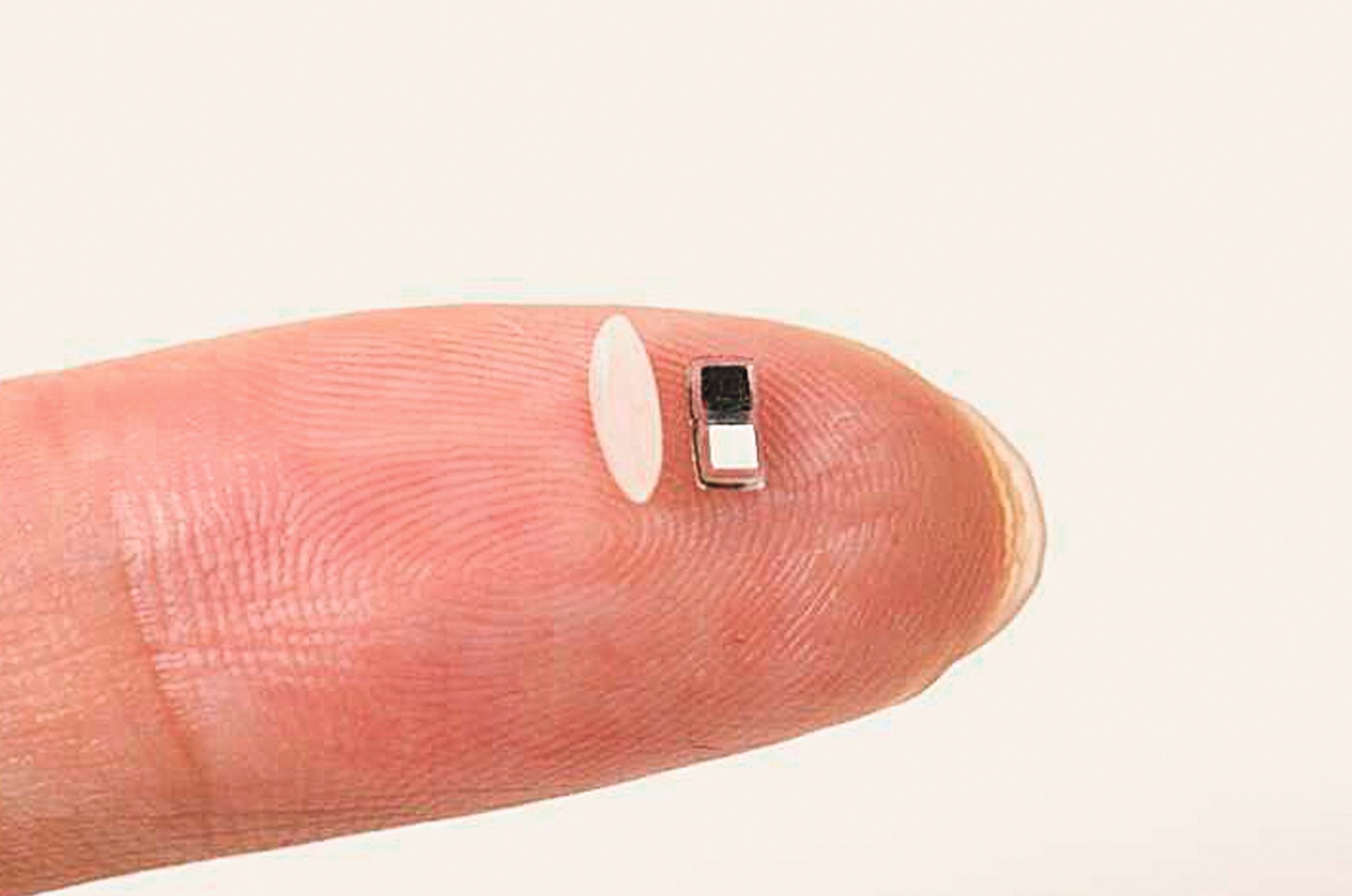A smaller pacemaker than a grain of rice

Northwestern University researchers in Illinois have developed an extraordinarily small pacemaker that promises to revolutionize heart treatments, especially for the most vulnerable patients. The new device, smaller than a grain of rice, represents a significant advance in medical miniaturization. Its extraordinarily reduced size (only 1.8mm wide, 3.5mm long and 1 millimeter thick) allows it to be introduced into the body through a non-invasive syringe.
« We have developed what, as much as we know, is the smallest pacemaker in the world, » says John A. Rogers, a bioelectronics pioneer at Northwestern and a device development leader. « There is a critical need for temporary pacemakers in the context of pediatric cardiac surgery, and this is a case of use where size miniaturization is incredibly important. »
Focus on pediatric patients
This small pacemaker responds to a particularly sensitive medical need: newborns with congenital heart defects. About 1% of children are born with some kind of cardiac defect, regardless of living in countries with limited or resource -rich resources.
Igor Efimov, an experimental northwestern cardiologist and study co-leader, explains: “Our main motivation was children. The good news is that these children only need temporary stimulation after surgery. In about seven days, the heart of most patients will be repaying itself. But these seven days are absolutely critical.
Light activation
The system works through a sophisticated mechanism that combines extreme miniaturization with an ingenious light activation system. The tiny Pacemaker is implanted in the heart and works in sync with a portable external device that is placed on the sick’s chest.
This external device constantly monitors the heart rate and, when detecting irregularities, automatically emits infrared light impulses. This light, capable of penetrating the skin, sternum and muscles of the patient, activates the internal pacemaker that generates the necessary electrical impulses to regulate the rhythm of the heart.
Technology takes advantage of the natural capacity of the human body to lead infrared light, creating an uninvial bridge between the outer device and the internal pacemaker. « Infrared light penetrates the body very well, » explains Efimov. «If we lean a flashlight to the palm, we see the light shining on the other side. It turns out that our body is an excellent driver of light ».
Biodegradable technology
Perhaps one of the most revolutionary aspects of this device is the fact that it was conceived to dissolve naturally in the body when it is no longer necessary. All components are biocompatible, so they gradually disintegrate in body biofluids, completely eliminating the need for posterior surgical removal.
This feature solves a significant problem with the current temporary pacemakers, which require electrodes that stand out from the patient’s chest and which have to be removed, with the risk of complications such as infection, displacement, tissue damage, bleeding and blood clots that may be fatal.
Rogers explains: « By minimizing size, we drastically simplify implementation procedures, we reduce trauma and risk to the patient, and with the dissolution nature of the device, we eliminate any need for secondary surgical removal procedures. »
Battery fed by body fluids
To achieve this extremely small size, the researchers completely reinvented the power source of the device. Pacemaker is fed by a galvanic cell, a simple but effective type of battery that transforms the chemical energy of body fluids into electricity. The ingenious design uses two different metals as electrodes to generate and send electrical impulses to the heart.
This innovation eliminated the need for traditional or reception antennas, which was fundamental to the extraordinary miniaturization of the device.
Versatility and future applications
Despite its small dimensions, this pacemaker provides as stimulation as a normal size pacemaker, proving that in this case the small size is not incompatible with efficiency. Extreme miniaturization also allows you to distribute several of these devices in different areas of the heart, controlling them independently using different light colors to obtain a more sophisticated synchronization than that permitted by traditional pacemakers.
This pioneer technology opens a wide range of possibilities for bioelectronic medicine that go far beyond cardiac dominance, including applications to help nerve and bones heal, treat complex wounds and block chronic pain through specific and controlled electrical stimuli.
The study, published in the journal Nature, demonstrates the effectiveness of the device in a series of large and small animal models, as well as in human hearts of deceased organ donors, which is a good omen for their clinical implementation. This innovation represents a quantum leap in the treatment of heart disease, especially for smaller and more vulnerable patients.







